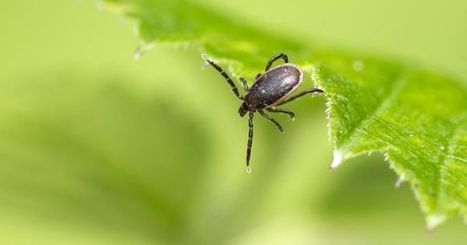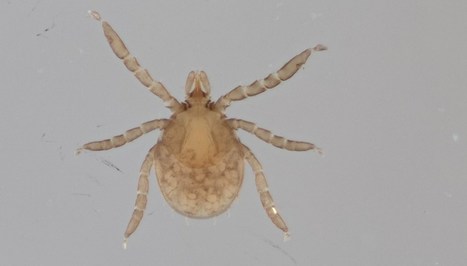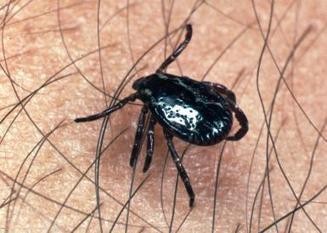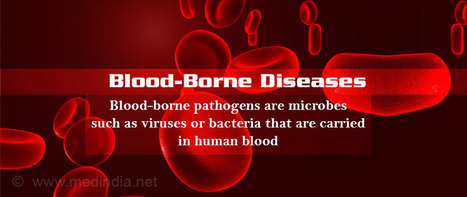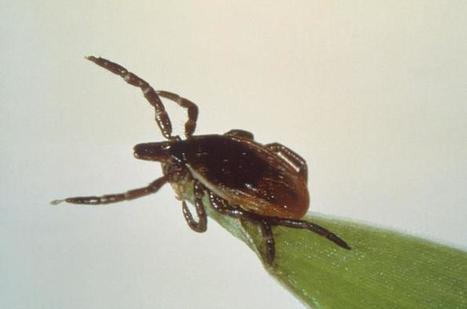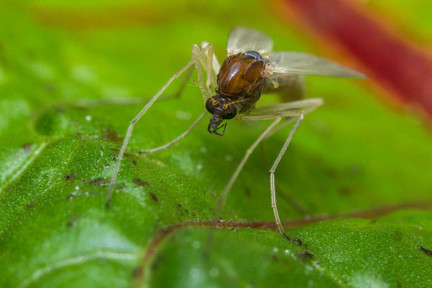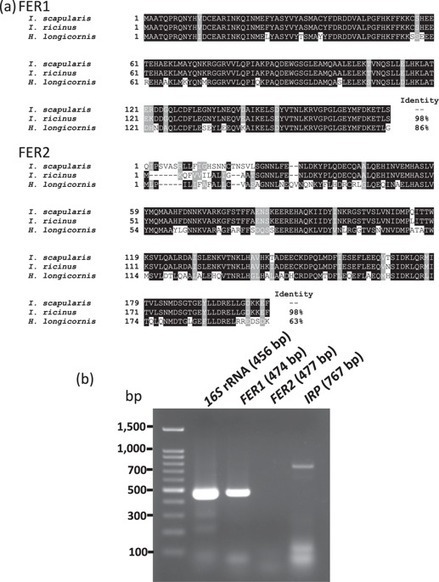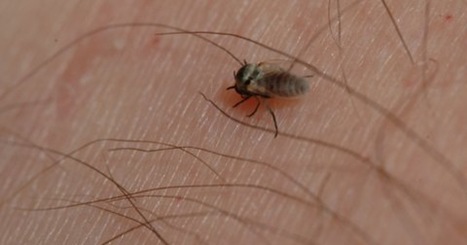 Your new post is loading...
 Your new post is loading...
Add the newly discovered Alongshan virus (ALSV) to the growing list of microbes that ticks can transmit.
Via Donna MacPherson Lugar

|
Scooped by
Jana Pearce
|
The castor bean tick, Ixodes ricinus(L.) (Ixodida: Ixodidae), is the principal vector of pathogens causing tick-borne encephalitis or Lyme borreliosis in Europe. It is therefore of general interest...

|
Scooped by
Jana Pearce
|
An increase in the Lone Star tick population since 2006, and the ability to recognize the ticks as the source of 'alpha gal' allergy to red meat has meant significantly more cases of anaphylaxis being properly identified.

|
Scooped by
Jana Pearce
|
HORSEFLY bites are painful and often draw blood from the victim. However, they can also be mistaken for bites from other insects. Check bites for signs they could be from another, more dangerous, insect.

|
Scooped by
Jana Pearce
|
Thanks to a growing tick database at the University of Turku, researchers have new insights into the disease pathogens that the tiny, blood-sucking arachnids carry.
In the southern U.S., blacklegged tick larvae and nymphs can be found on hosts, but they don't otherwise show up in vegetation or—as a new study finds—in leaf litter or soil either. So where are they hiding?
Via Donna MacPherson Lugar

|
Scooped by
Jana Pearce
|
Thanks, Holly Gaff. Soon, anyone straining to tweeze off a mid-back tick can find answers to the obvious question: What if humankind just went after the little

|
Scooped by
Jana Pearce
|

|
Scooped by
Jana Pearce
|

|
Scooped by
Jana Pearce
|
Knulle, W.; Devine, T. L., 1972: Evidence for active and passive components of sorption of atmospheric water vapour by larvae of the tick Dermacentor variabilis

|
Scooped by
Jana Pearce
|
Stone, B. F.; Atkinson, P. W.; Knowles, C. O., 1974: Formamidine structure and detachment of the cattle tick Boophilus microplus

|
Scooped by
Jana Pearce
|
Your first line of defense against tick-borne diseases is avoiding ticks. Follow these 10 tips to avoid tick bites when you head outdoors.

|
Scooped by
Jana Pearce
|
Blood-borne pathogens are microbes such as viruses or bacteria that are carried in human blood. Proper risk management may help reduce blood-borne disease prevalence.
|

|
Scooped by
Jana Pearce
|
The Pennsylvania Department of Environmental Protection (DEP) announced that it is conducting a five-year environmental surveillance of ticks to assess the risk of tickborne illnesses across Pennsylvania.

|
Scooped by
Jana Pearce
|
More than 16,000 ticks were sent in by people across the country and tested for various bacterial infections. Results show ticks capable of carrying Lyme disease are more widespread than originally thought.

|
Scooped by
Jana Pearce
|
Pharmacists in Monteregie can now administer antibiotics to people at risk for Lyme Disease....

|
Scooped by
Jana Pearce
|
Nooseeums. You can have several of these biting pests annoying you before you even realize it, and the bites don't go away quickly. What's the best way to keep sand flies away?

|
Scooped by
Jana Pearce
|

|
Scooped by
Jana Pearce
|
Apoptosis is programmed cell death that ordinarily occurs in ovarian follicular cells in various organisms. In the best-studied holometabolous insect, Drosophila, this kind of cell death occurs in all three cell types found in the follicles, sometimes leading to follicular atresia and egg degeneration. On the other hand, egg development, quantity and viability in the mosquito Culex quinquefasciatus are disturbed by the infection with the endosymbiont Wolbachia. Considering that Wolbachia alters reproductive traits, we hypothesised that such infection would also alter the apoptosis in the ovarian cells of this mosquito. The goal of this study was to comparatively describe the occurrence of apoptosis in Wolbachia-infected and uninfected ovaries of Cx. quinquefasciatus during oogenesis and vitellogenesis. For this, we recorded under confocal microscopy the occurrence of apoptosis in all three cell types of the ovarian follicle. In the first five days of adult life we observed oogenesis and, after a blood meal, the initiation step of vitellogenesis. Apoptoses in follicular cells were found at all observation times during both oogenesis and vitellogenesis, and less commonly in nurse cells and the oocyte, as well as in atretic follicles. Our results suggested that apoptosis in follicular cells occurred in greater numbers in infected mosquitoes than in uninfected ones during the second and third days of adult life and at the initiation step of vitellogenesis. The presence of Wolbachia leads to an increase of apoptosis occurrence in the ovaries of Cx. quinquefasciatus. Future studies should investigate if this augmented apoptosis frequency is the cause of the reduction in the number of eggs laid by Wolbachia-infected females. Follicular atresia is first reported in the previtellogenic period of oogenesis. Our findings may have implications for the use of Wolbachia as a mosquito and pathogens control strategy.

|
Scooped by
Jana Pearce
|
As ticks spread, so do cases of Lyme disease.

|
Scooped by
Jana Pearce
|

|
Scooped by
Jana Pearce
|
Ticks Tick Borne Dis. 2017 May 13. pii: S1877-959X(16)30231-X. doi: 10.1016/j.ttbdis.2017.05.002. [Epub ahead of print]

|
Scooped by
Jana Pearce
|
Foelix, R. F.; Chu Wang, I. W., 1972: Fine structural analysis of palpal receptors in the tick Amblyomma americanum (L.)

|
Scooped by
Jana Pearce
|
On unseasonably warm winter days, people and pets like to go outdoors for some fresh air. Should you protect yourself from tick bites in winter?

|
Scooped by
Jana Pearce
|
Rhipicephalus sanguineus belongs to a complex of hard tick species with high veterinary-medical significance. Recently, new phylogenetic units have been discovered within R. sanguineus, which therefore needs taxonomic revision. The present study was initiated to provide new information on the phylogeography of relevant haplotypes from less studied regions of Europe and Africa. With this aim, molecular-phylogenetic analyses of two mitochondrial markers were performed on 50 ticks collected in Hungary, the Balkans, countries along the Mediterranean Sea, Kenya and Ivory Coast. In the “temperate lineage” of R. sanguineus, based on cytochrome c oxidase subunit 1 (cox1) and 16S rRNA genes, Rhipicephalus sp. I was only found in the eastern part of the Mediterranean Basin (with relatively homogenous haplotypes), whereas Rhipicephalus sp. II occurred in the middle-to-western part of this region (with phylogenetically dichotomous haplotypes). Ticks identified as R. leporis (based on morphology and cox1 gene) were found in Kenya and Ivory Coast. These clustered phylogenetically within R. sanguineus (s.l.) (“tropical lineage”). In the Mediterranean Basin two mitochondrial lineages of R. sanguineus, i.e. Rhipicephalus sp. I and Rhipicephalus sp. II exist, which show different geographical distribution. Therefore, data from this study confirm limited gene flow between Rhipicephalus sp. I and Rhipicephalus sp. II, but more evidence (analyses of nuclear markers, extensive morphological and biological comparison etc.) are necessary to infer if they belong to different species or not. The phylogenetic relationships of eastern and western African ticks, which align with R. leporis, need to be studied further within R. sanguineus (s.l.) (“tropical lineage”).
|



 Your new post is loading...
Your new post is loading...

